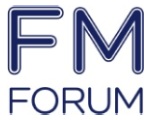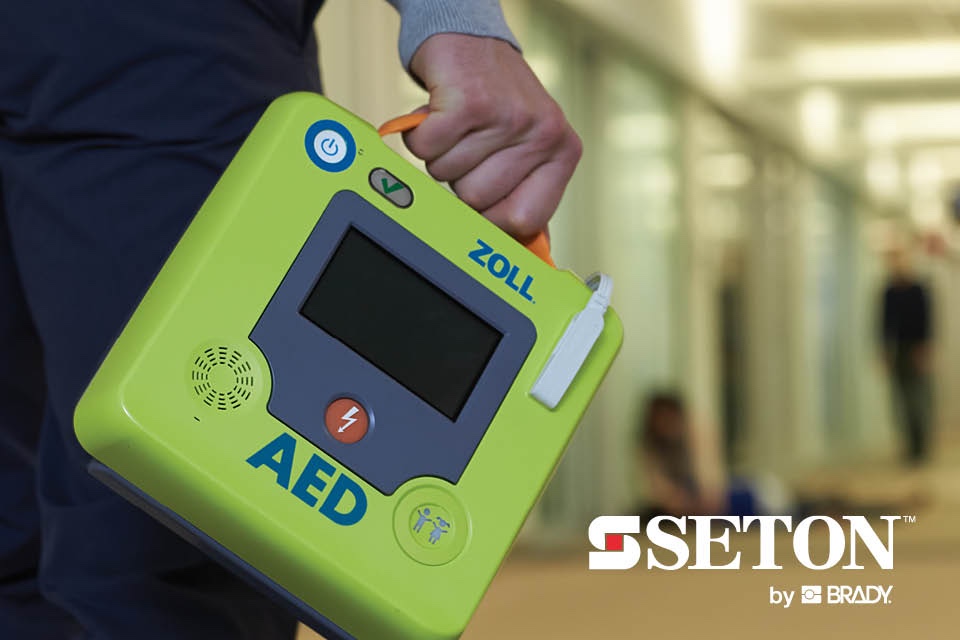By Lucy Atkinson, Business Support Manager, Genilogic
The main framework of Health and Safety legislation has remained the same for 45 years in the form of The Health and Safety at Work etc Act, however,
As the work we undertake in the name of FM becomes more complex, so does the risk; and in turn, the controls to keep our industry safe at work are bigger and better than before, but are we keeping up?
We aim to point out the most common challenges to compliance within the FM industry and explore some of the ways to overcome them.
1. Ensuring everyone is in the know
Policy and Procedure Management Problems
FM management teams are tasked with the daunting job of ensuring that all staff have visibility of all the relevant health and safety documents and policies relevant to their role. The nature of FM often means that staff can be widespread location-wise which creates a challenge. These staff members may be tricky to reach, however, they need to not only work compliantly, they also need to work safely, or your business stands to pay the price. It is important that these staff have the same access to information, policies and resources as the staff on the next desk from you, enabling them to operate in an informed and safe manner, whilst protecting your brand standards. The need to communicate safety procedures becomes even more important when considering the scope of FM responsibilities. Staff must have sight of everything relevant, such as; the building regulations and documentation regarding how a facility is to be managed, any products that should or shouldn’t be used, what works require planning permission, what time of day certain tasks may be undertaken and any processes regarding notifying relevant on site contacts, to name a few. Failure to communicate any of the above information to your staff could cost your company a contract ultimately.
Tracking Acknowledgements Simplified
Rather than sending paper copies via post and waiting for staff to read and return paperwork, upload documents to a cloud storage solution such as Google Drive, Dropbox or SharePoint. You then can give all workers a login and have them log in and read. You will still need to track this, whether that’s by having them upload a document to the cloud server with a list of all documents they have read and understood, along with any queries or issues they have, but at least you are being more eco-friendly whilst saving costs on printing and posting. Bear in mind that as well as risk assessments, method statements, policies and procedures, your staff also need to see all COSHH SDS and risk assessments, as well as being provided with any control measures or PPE suggested on the assessments. Having these documents hosted in a central library means that staff can access them from anywhere, including from site to check back if they need to clarify something before commencing works. You may also consider giving the client access to their folder of documentation, this may offer them reassurance regarding your management and procedures. They are also more likely to be proactive about notifying you of changes if they have sight of the documents your staff are relying on to work.
2. Identifying Site Specific or Dynamic Risks
Dynamic Failures
FM has always been a remote job, with few FM professionals managing to spend their full week at their desks. What is more is that FM workers are in ever changing work environments, which provide ever changing levels of risk, it can be a health and safety minefield. Many companies tackle this by simply completing task specific risk assessments which are then complimented by a site risk assessment, the two together should then provide a site and task specific risk assessment which hopefully has covered everything off. However, not identifying and controlling site and task specific risks not only has the potential to negatively change lives, but it could also increase costs to businesses through sick pay, court cases and fines, compensation claims and higher insurance premiums.
Change of Environment Checklist
Although the trend will be sufficient in most situations, staff attending sites need to be fully aware of the ‘normal’ risks for each site, to enable them to spot new or dynamic risks. All staff who attend sites need to be adequately trained to identify hazards and how to implement appropriate controls. A course which introduces health and safety, or risk assessment would give staff enough knowledge to make informed and safe decisions. Staff need to be aware that they should not commence works if they think a change to the task or environment will pose risk to any life or property and they should have a contact at the office who can give Health and Safety guidance or attend sites to assess and advise. It helps to provide staff with a check list to fill in upon arrival to any site regarding changes to the work environment, process or equipment with advice on who to contact to talk about any changes with.
3. Reporting Accidents, Incidents and Hazards
The Onsite Accident Book
Having your staff working on a client site can sometimes cause confusion surrounding policies with regards to reporting. Often FM staff will fill in the accident book on site but then not mention it to their own employers, or not report it to anyone at all. Whilst unreported accidents make the figures look good for annual review, they put your company at risk. Reporting gives a company a reason and an opportunity to review current processes, identify any missing controls and implement accident prevention measures or retrain staff. If an accident goes on to become a RIDDOR and evidence is found that previous accident reports have not been managed effectively, your company could face large fines or even prosecution. The HSE can drop in without notice to undertake spontaneous investigations too, which means that nothing necessarily has to go wrong for a company to be prosecuted.
The Solution
For accident, incident and hazard reporting, it may help to have staff to return a mandatory weekly report or questionnaire, regarding anything they should have reported. Once staff start reporting these events in real time rather than on a weekly report, the reports can be lessened in frequency. It may also help to resend the company reporting policy more frequently and mention it in news bulletins, conferences, performance appraisals and any other staff focussed events or publications. It is also wise to let staff know what you’re doing about the reports they make, so if an accident happens due to an uneven surface, letting staff know you have put in signage, or resurfaced, will help staff feel like their reports matter and will be heard.
4. Managing COSHH Products Safely
Oh My COSHH!
FM is one of the most diverse industries in the modern world, employing staff and contractors spanning across many categories. With many of the services provided to FM clients requiring the use of COSHH products (products which are managed under Control of Substances Hazardous to Health, 2002), the pressure is on FM companies to ensure they are aware of all the products their workers are exposed to, and the associated risks. It is not uncommon for clients to provide their own materials, equipment and products which are better suited to their building for use by their FM company, making keeping track of these products very difficult indeed. Staff who are exposed to COSHH products without proper knowledge, training, PPE, tools or in unsafe conditions are at risk of significant harm. COSHH products also pose significant risk to property, using a chemical on an incompatible surface type can cause irreparable damage which could cost an FM company not only the cost to replace the surface or item, but the entire contract.
COSHHing it right!
Ensure all staff have received COSHH training to enable them to easily identify if they are working with a COSHH product. They should be aware of common COSHH products and the risks they pose as well as how to identify key symbols and what they mean. As well as this, staff should have both seen and acknowledged the Safety Data Sheets (SDS) and COSHH risk assessments for all products they work with or near, it is an employer’s responsibility to ensure that SDS are up to date and available to view and reference. Staff also need to be provided the correct tools, PPE as well as any other controls identified in the risk assessment for handling the product as detailed on the SDS or as required for the task. Using a spreadsheet showing each employee along one side with the product across the other, checking off when they have seen each one. Ensure you start again for updated/new SDS. Also ensure staff know where to find information in an emergency and how to report issues with substances, PPE or tools.
5. Identifying Skills Gaps
Skills, here, there and everywhere!
Managing training can create a full-time job role in larger organisations. Not only must an employer track what courses their staff have completed, they must also identify training requirements as they start working with them, and again every time something changes which could require further training. On top of this, most qualifications require refreshers, of varying intervals, generally from annually to 60 months. Staff can be difficult to pin down when it comes to planning training days and unfortunately, they rarely seem to want to keep track of their own training requirements. Aside from keeping your staff trained so that you can operate compliantly; it may also be that having a database of qualifications and competencies helps you identify who to send for a particular job, for example, you may need to select a staff member with working at heights competencies if you are arranging an external window clean for a tall building.
Spreadsheets
Most companies without a health and safety software solution in place must rely on spreadsheets. The axis
Static Safety
Although these manual answers are the most common ways to manage our biggest pains to compliance, health and safety software offers a much simpler resolution. Many companies are still using the same system they have been using for over 20 years to manage health and safety, whilst upgrading systems everywhere else. Although this is perhaps a case of not fixing something that is not broken, it is possible to spend money to save and to allocate resources differently to manage compliance in a better way.
How Software Can Transform Management
Software hosts and sends out documents and policies whilst tracking staff acknowledgement, ensuring these acknowledgements can be audited. These documents and policies can be amended at anytime and resent, so if a dynamic risk is spotted, a competent person can reassess and resend, safe in the knowledge that everyone has had sight of any changes before work commences. Most solutions have a reporting module, giving staff access to report accidents, incidents and hazards in real time, giving managers and competent people the information that they need to implement changes for future prevention, again in real time. Systems often come with different ways to filter information so that managers can spot trends or issues with current procedures. COSHH, again, is normally an available module, some solutions offer hosting and automatic updates of all COSHH SDS whilst also allowing you to pull through pertinent information straight from the SDS into a COSHH assessment. Training can also be tracked and managed completely by a software solution, many solutions come with integrated e-learning, offering more value for money. The software then tracks all completions, internally and externally and auto-enrols staff for internal refreshers and notifies the relevant people regarding external courses/refreshers.
Out of a Job?
Many health and safety professionals shy away from software as they worry it takes value from their role and knowledge, however, that is simply not true. Companies need a health and safety professional, whether as a consultant or an inhouse team or person. Giving this professional access to a software solution is to compliment their work, it helps them distribute information, track and monitor compliance and review more efficiently. Health and safety software relies on having someone competent putting information into it. The idea is to make things easier and more efficient to manage, and what will they do with the time they’ll save? They will do all the things they will tell you they feel they never have enough time to do; visit sites to assess compliance, give training, arrange audits, implement more controls and prevention methods whilst improving your company’s health and safety culture.
Features and Benefits
As well as our top five, many solutions come with translation tools, enabling a one-click translation to many languages, saving thousands in costs whilst being completely inclusive. Some other tools on offer amongst the market include DSE and MAC Assessment tools, stress indicator tools and toolbox talks. Most solutions are cloud-based and can be accessed from anywhere on any device, which is a big plus for the FM industry. As well as this, most solutions are scalable to your business size, so even if your business is small now, it is worth investing in a compliant and simple to manage system, then as you grow, your software grows with you. Using software to create sector specific safe systems of work allows for companies to consider the quality centrally before national/global dissemination of information, protecting company and brand names by setting standards. Inducting staff with a health and safety software system in place reduces your carbon footprint whilst also saving costs, most solutions allocate a staff member to everything they need when you add them in and track acknowledgements on everything from the staff handbook to your internet use policy! As well as all of this, FM businesses often give their clients a log in to their system, showing them how seriously they take compliance and giving them a USP over their competitors. Are you ready to move into 21stcentury FM compliance management?









